A recent “Design Slam” for Autodesk University gave an HOK team the opportunity to flex the power of their imaginations—as well as a host of computational design tools—to design a mixed-use transit-oriented development (TOD) on New York’s Governors Island. Though the project was just an exercise, there are real proposals to rezone this site for a development that would include a climate center and ferry terminal.
The 172-acre Governors Island is a former military base in the middle of New York Harbor, between Lower Manhattan and Brooklyn. Today it is home to a new park, a 22-acre National Monument, many historic buildings, and educational and cultural facilities.
Sea levels are rising along with average temperatures. Storms are becoming increasingly more powerful and bringing severe flooding events farther inland. Yet nearly 40 percent of the U.S. population lives in coastal communities. Most of the world’s largest cities are along a coastline.
With such a prominent site in one of the world’s megacities, HOK’s team wanted to use this charrette to raise awareness about the urgency of creating sustainable, resilient urban developments around the world.
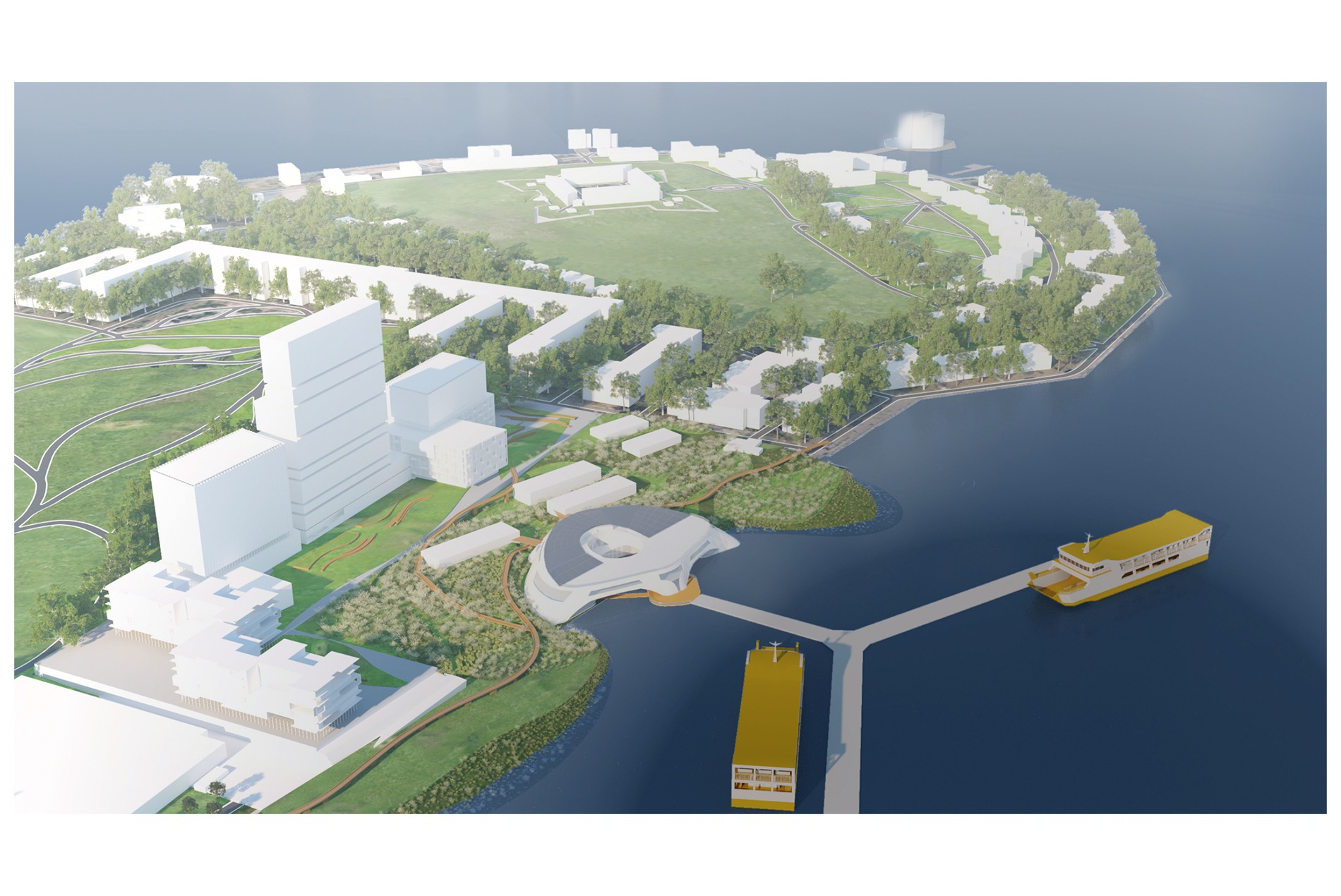
HOK’s team developed a design that includes an integrated landscape plan, a ground-floor climate research center, a second-story ferry terminal, a third-floor observation deck and a hydroelectric power plant designed to withstand a nine-foot rise in sea levels. The team optimized the building forms to reduce embodied carbon by 80 percent while creating a net-zero energy development.
As the sea levels rise and the concourse level succumbs to rising waters, the program flips. The ground-floor ferry terminal moves up to dry land on the second story and the climate center takes its place below, where it is enclosed so researchers can observe the responses of new building technologies to salt water.
HOK’s multidisciplinary team for this intense weeklong exercise included architects, structural engineers, sustainable design specialists and visualization experts. They coordinated their virtual efforts while using more than 20 different digital design tools.
Sea Level Rise
The design team explored how New York City can adapt to a changing climate and projections for significant sea level rise, which is one of the clearest impacts of climate change. There are forecasts for up to a nine-foot rise in tides by 2100. Extreme storms like Hurricane Sandy already can generate 13-foot surges.
The team sought to understand how the deployment of different land formations, resilient technologies and building systems could help prevent systemic erosion and flooding in buildings along coastlines.
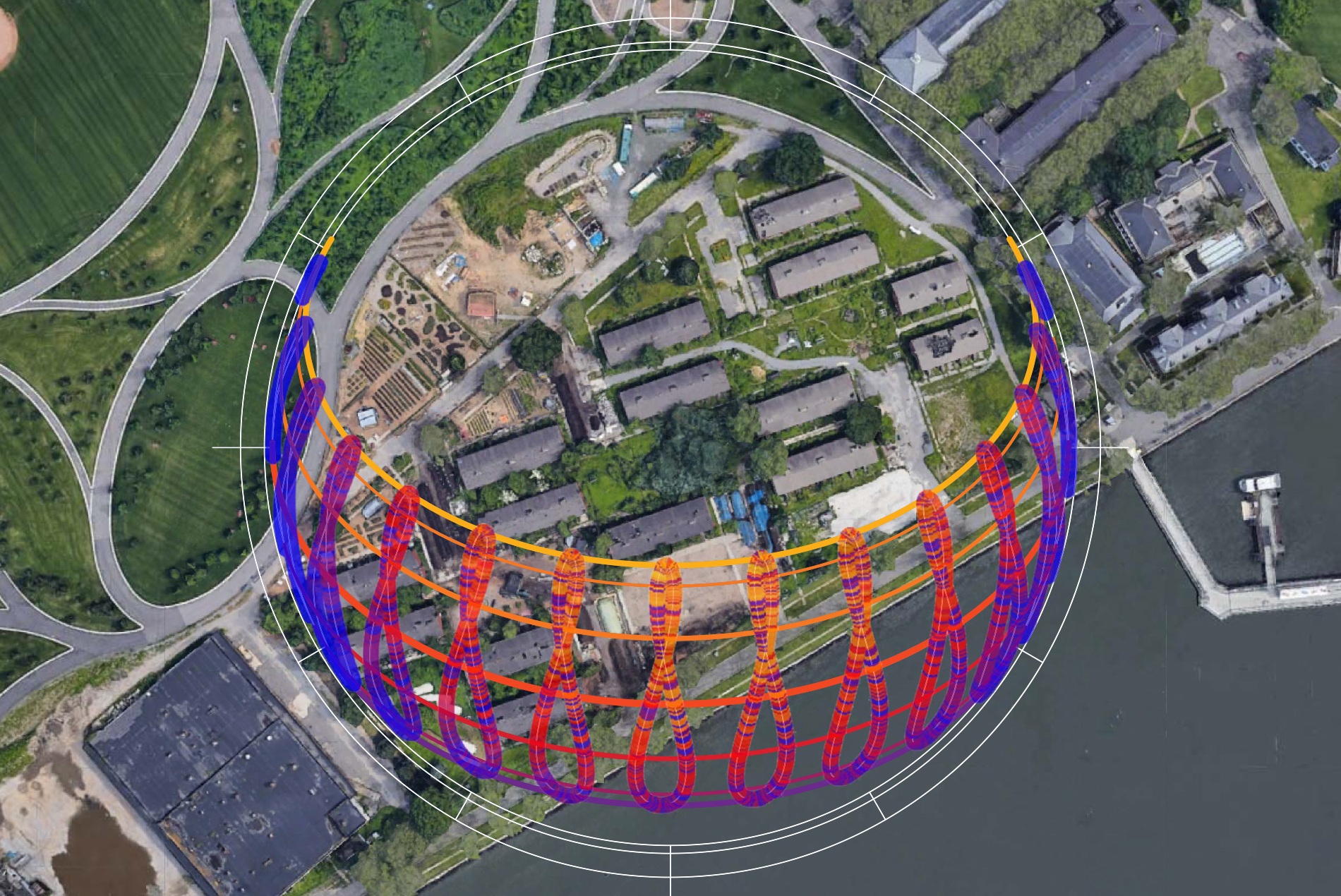
A Living Laboratory
The 20-acre site is adjacent to the Yankee Pier at the south end of Governors Island. HOK’s design team simulated current and future climate conditions to understand how climate change could impact this site and others along the New York Harbor. At the heart of the scheme are an integrated ferry terminal and climate research center set right along the seawall.
The design creates a hydrological park around these signature program elements. Here, researchers can explore the effects of the rising tides and increase in hydrostatic pressure on buildings. The climate center becomes a living lab that promotes awareness and conversations about resilient design.
Inviting in the Water
Adapting to sea-level rise calls for a move from gray infrastructure like seawalls to green infrastructure that lets natural systems do more of the work.
Though it seems counterintuitive, the team’s approach was to let water into the site. Rather than trying to build higher walls that could eventually be breached, the design accepts the transformation of the land into water while harnessing the power of the East River to generate energy on the island.
Protective berms direct the flow of water into a series of wetlands that slow storm surges and prevent erosion. Pedestrian bridges allow people to move through the changing landscape.
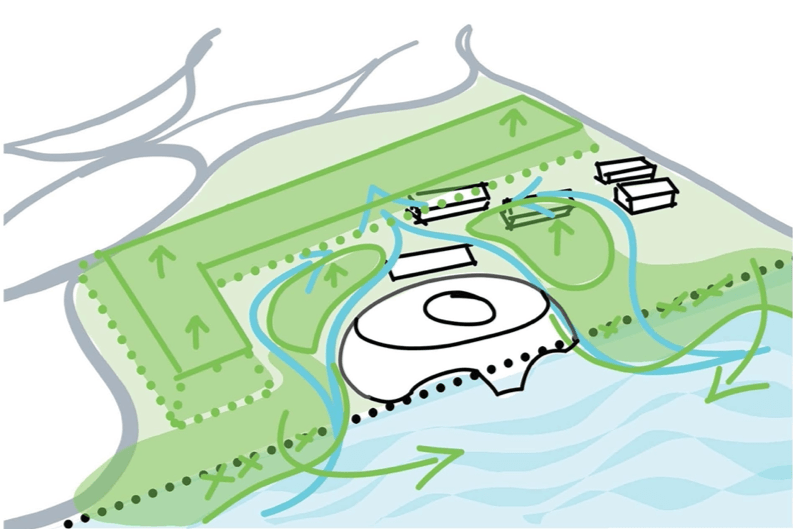
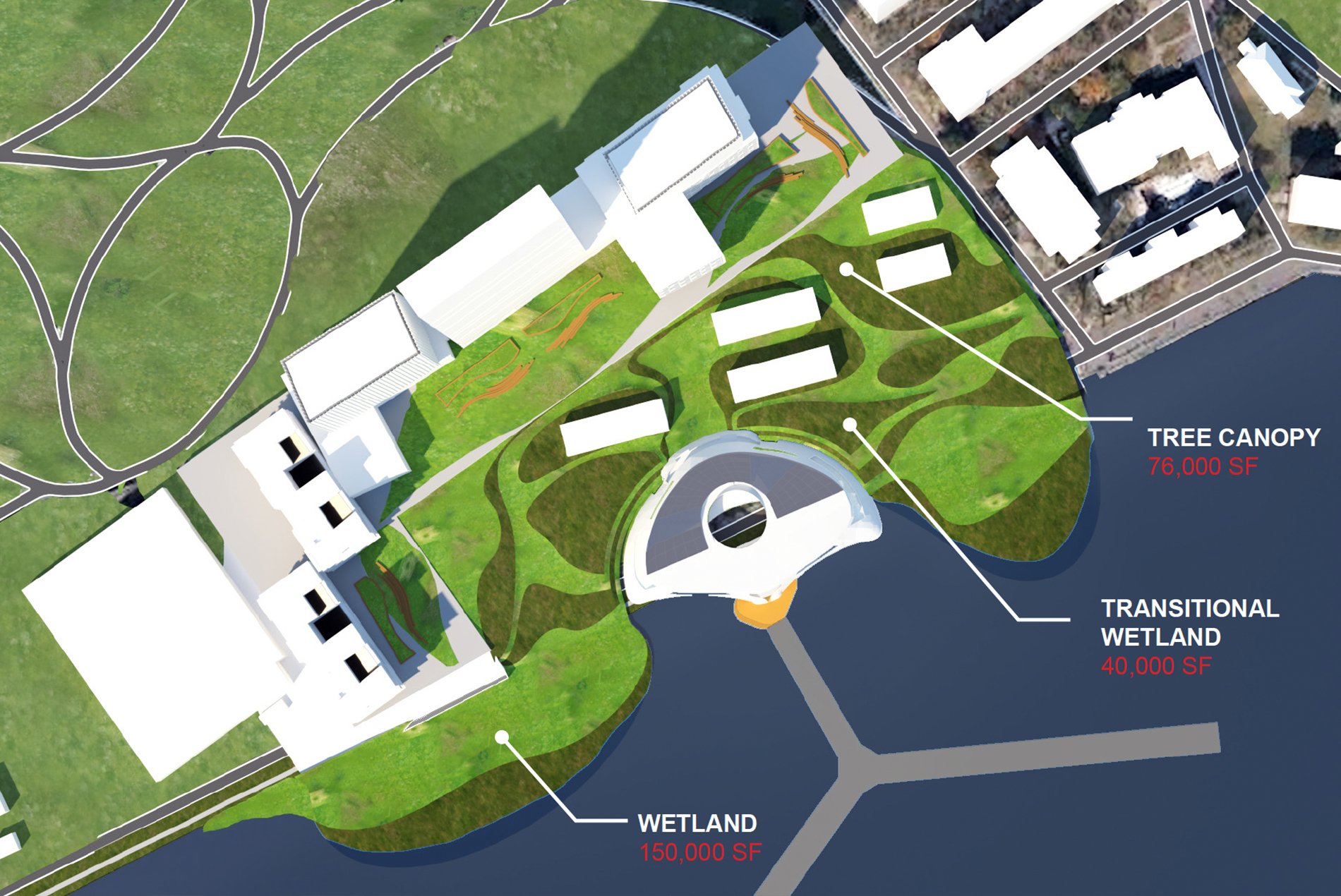
Working With Nature
The building site rests at the intersection of land and sea.
Ecosystem services—the benefits provided to people by the natural environment—are critical to resilience. Here, the wetlands, transitional grasses and a tree-lined landscape act like a sponge by absorbing and capturing water. They also sequester carbon, capturing the equivalent of 15 tons of C02 per year.
The Climate Park
As sea levels rise above five feet, the seawall will be breached and water will be welcomed into the site and wetlands. By allowing an existing housing structure to remain untouched, researchers can study the impact of saline exposure and hydrostatic pressure on buildings.
As sea levels rise by seven feet, researchers will be able to test the resilience of moderate and extreme building retrofits.
With the eventual nine-foot rise in water level, the entire site returns to the sea. Reinforced bridges preserve access across the site and to the ferry terminal.
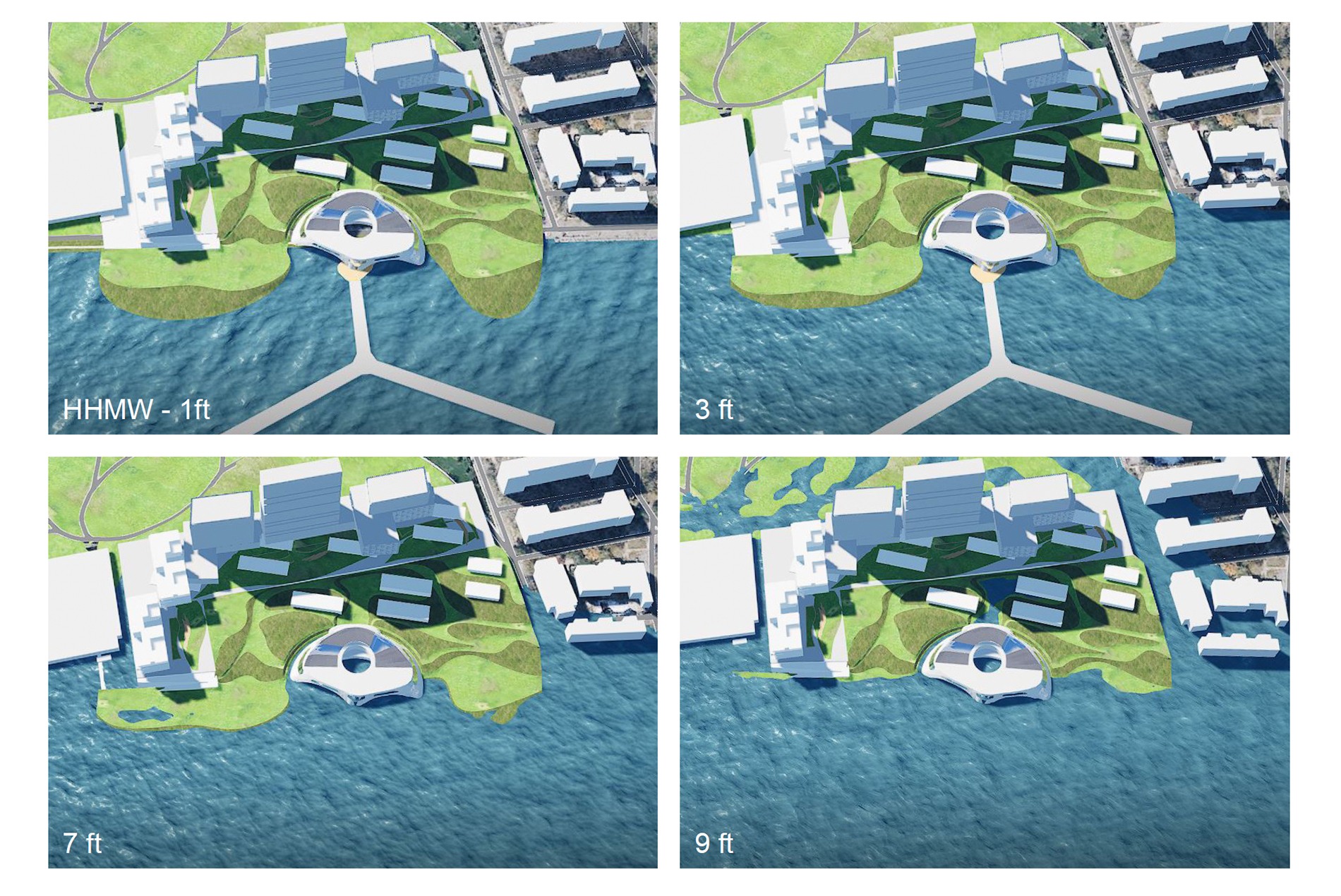
The Climate Center
The building serves as a living lab set in the wetlands. As the climate continues to change, the structure can demonstrate the resilience of buildings to hydrostatic pressures, tidal surges and extreme winds.
A solar roof and hydropower system generate energy to power the development.
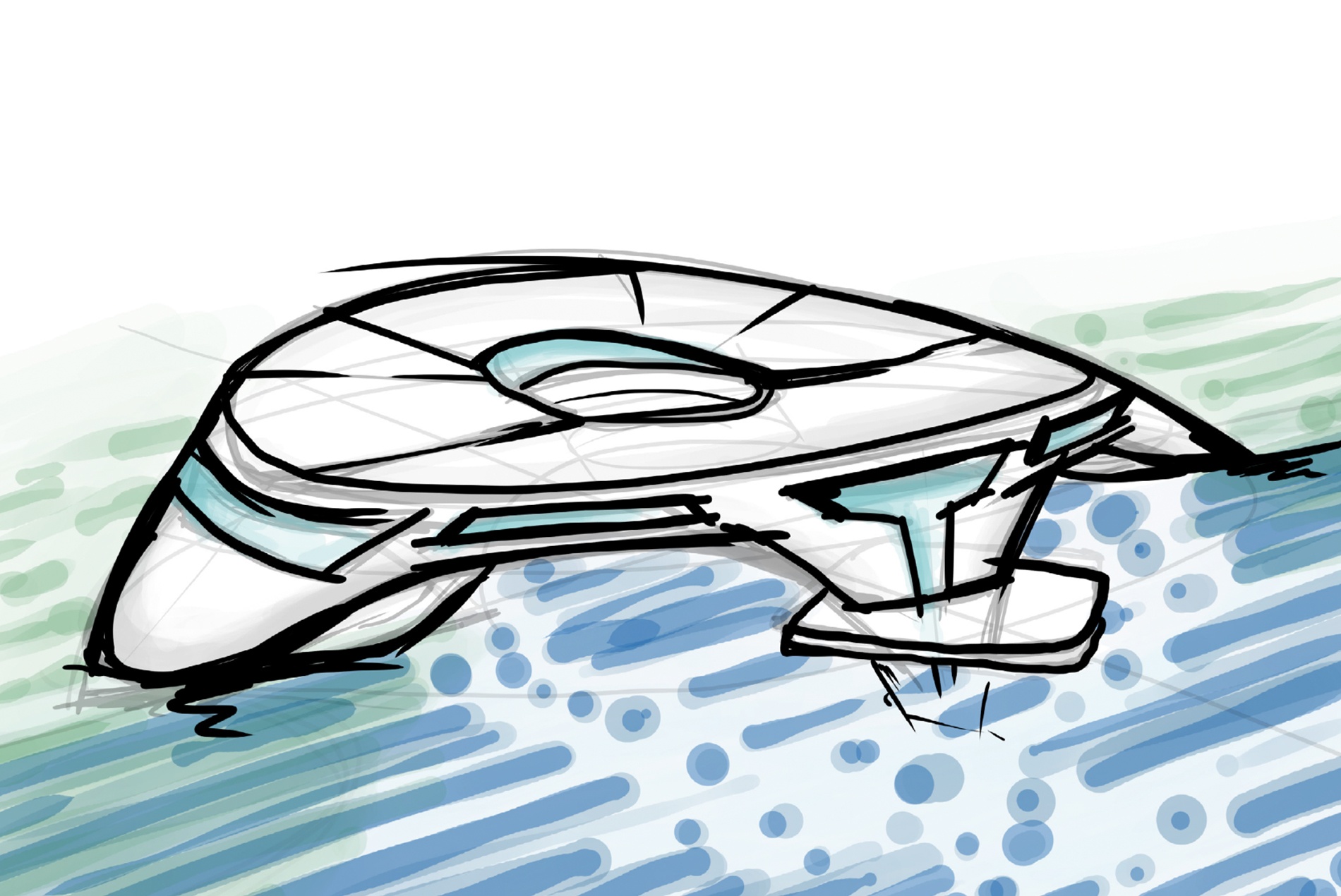
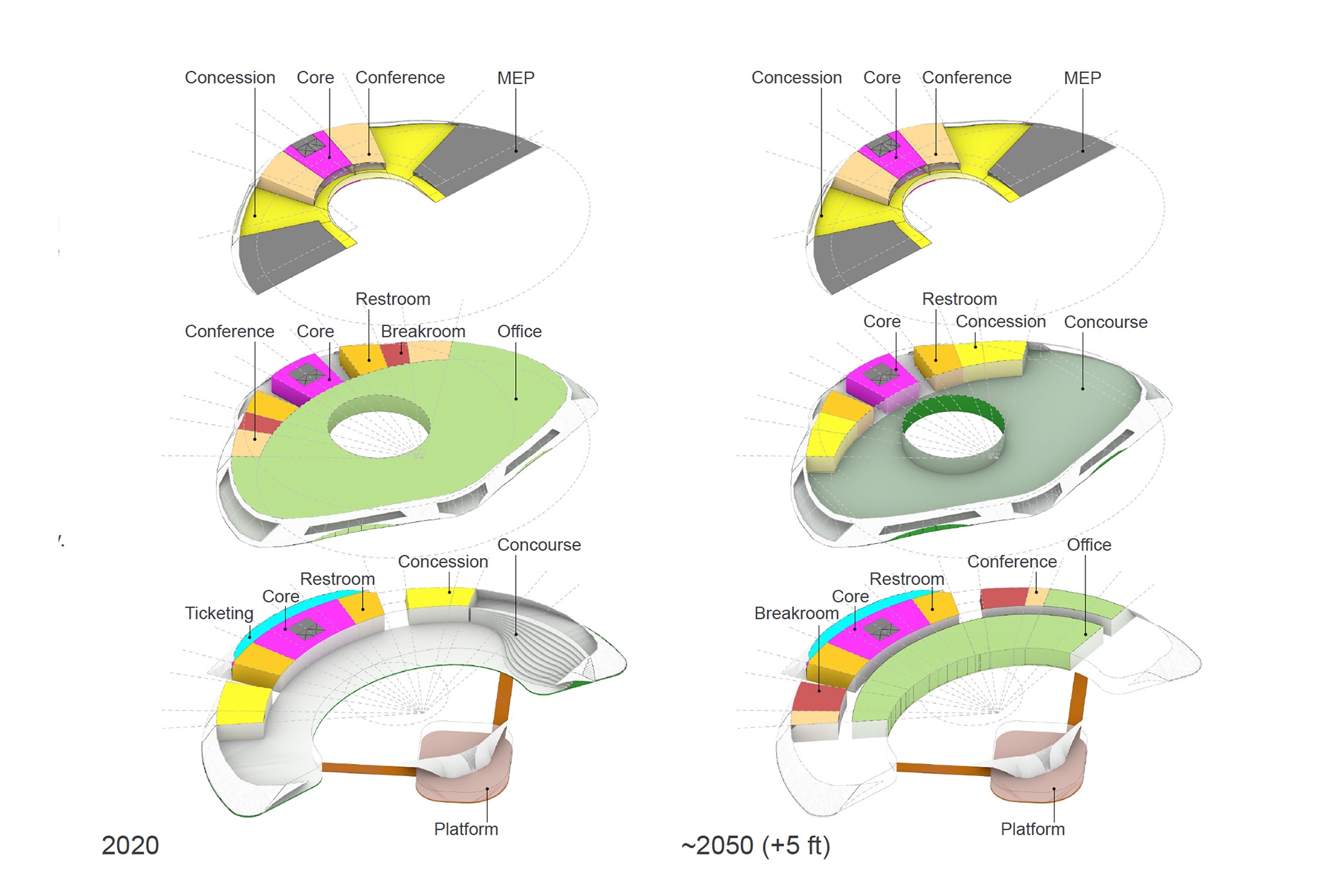
Adaptable Program
The design envisions a ferry terminal on the ground level, a climate center on the second floor, and an exhibition center and observation deck on the third floor.
As tides rise five feet by 2050, the program flips. The ferry pier and terminal move up to the second floor and the climate center moves down to the ground level, where researchers can observe the impact of hydrostatic pressures, rising tides, increasing wind loads and the impact of saline conditions on the building structure and materials.
A Glacier
A vault shape became the basis for the design. As sea levels rise, the building resembles a glacier being submerged by the water.
A 15,000-sq.-ft photovoltaic array on the rooftop supplies well over the 23 kBTU/sf/year required to make it a net-zero energy building.
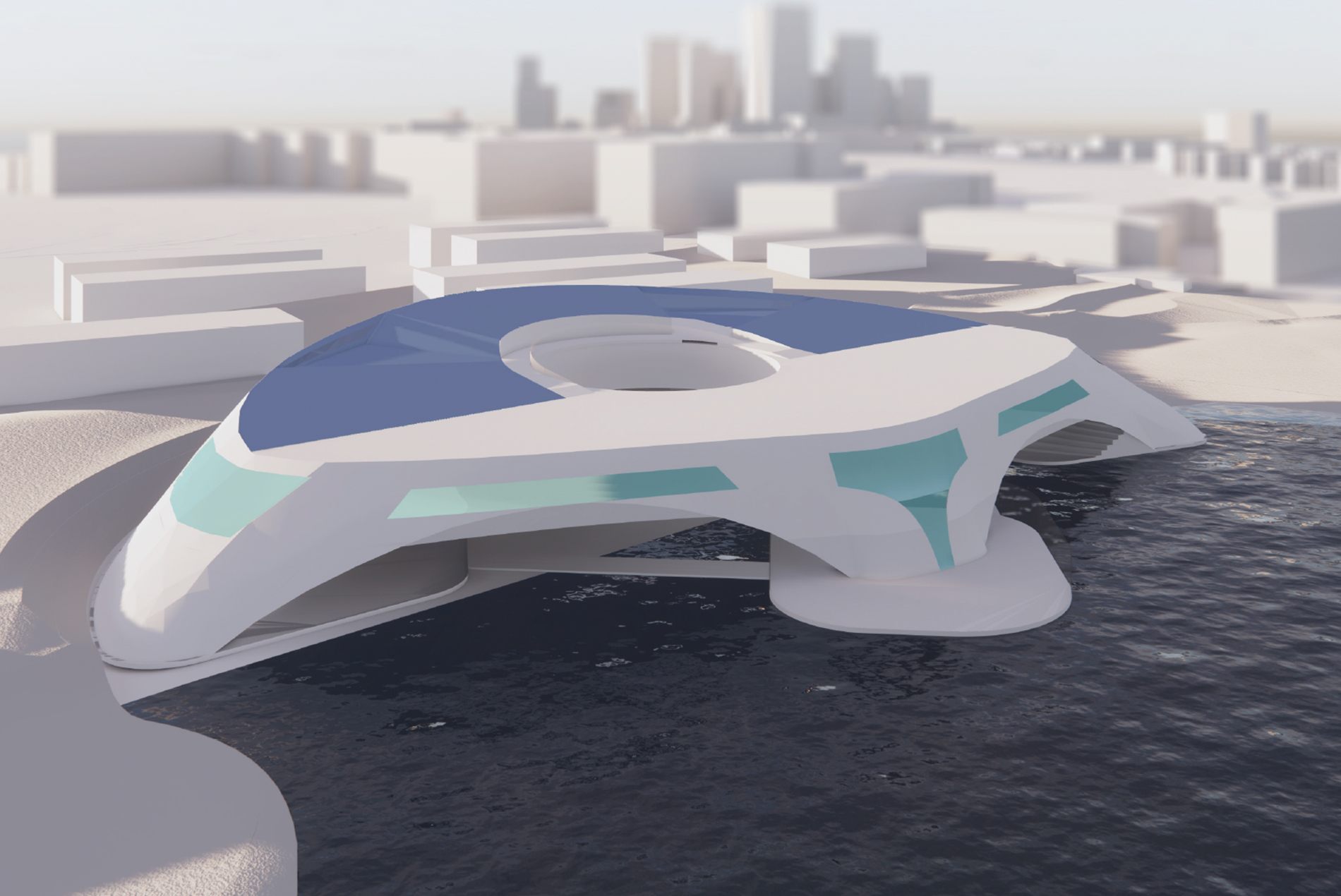
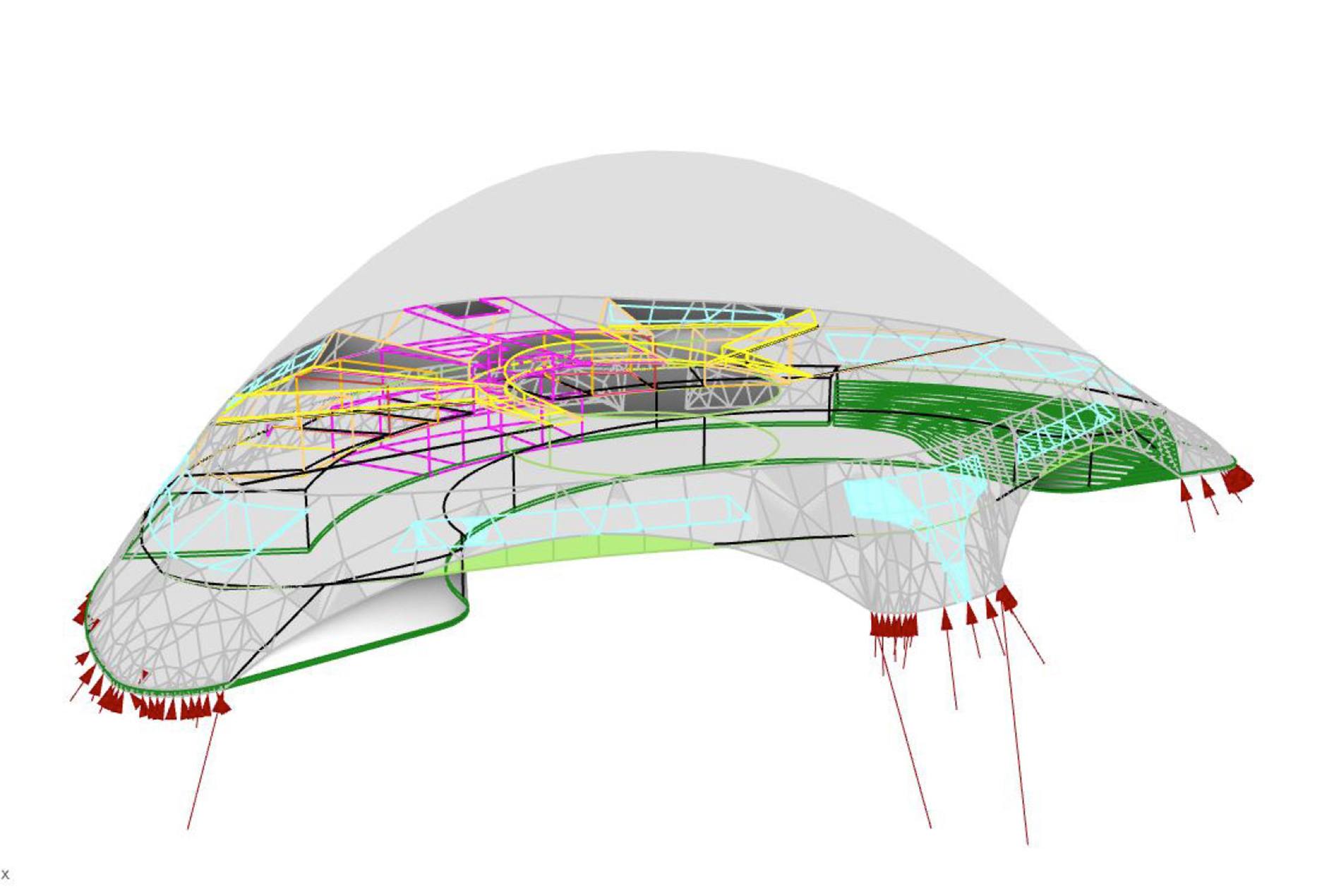
Optimizing the Structure
The engineers used parametric tools like HOK STREAM to rapidly optimize the design of the concrete vault structure. The team balanced projected water forces and wind loads with space needs, aesthetics, cost, energy use and embodied carbon.
The design integrates the program with a shape that minimizes stress concentrations on the structure.
Structural Analysis
The structural analysis and design helped the team visualize the balanced and unbalanced stresses of the vault, long span and tension ring.
The optimal shape is fairly standard—a good starting place for creating a thin-shelled structure.
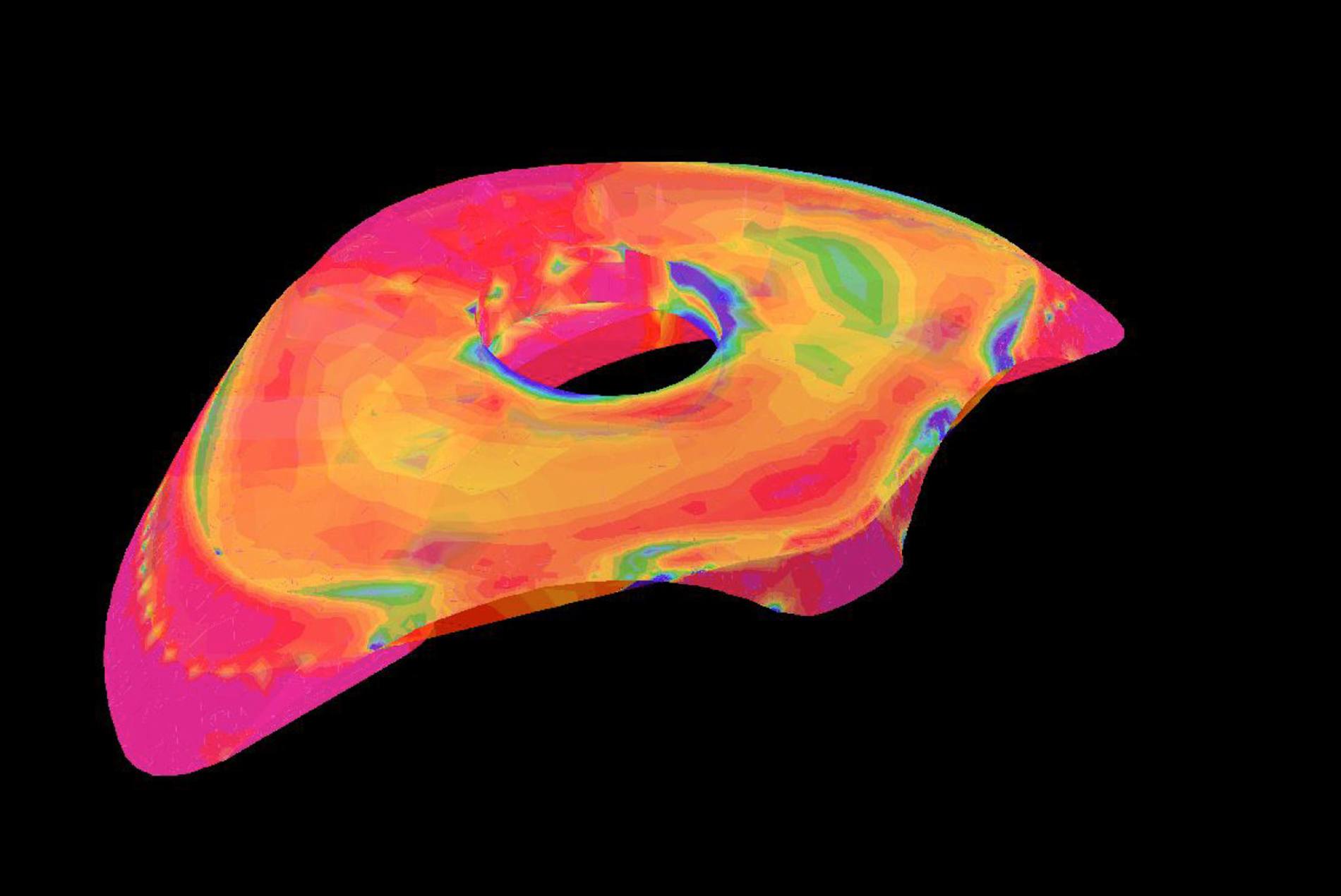
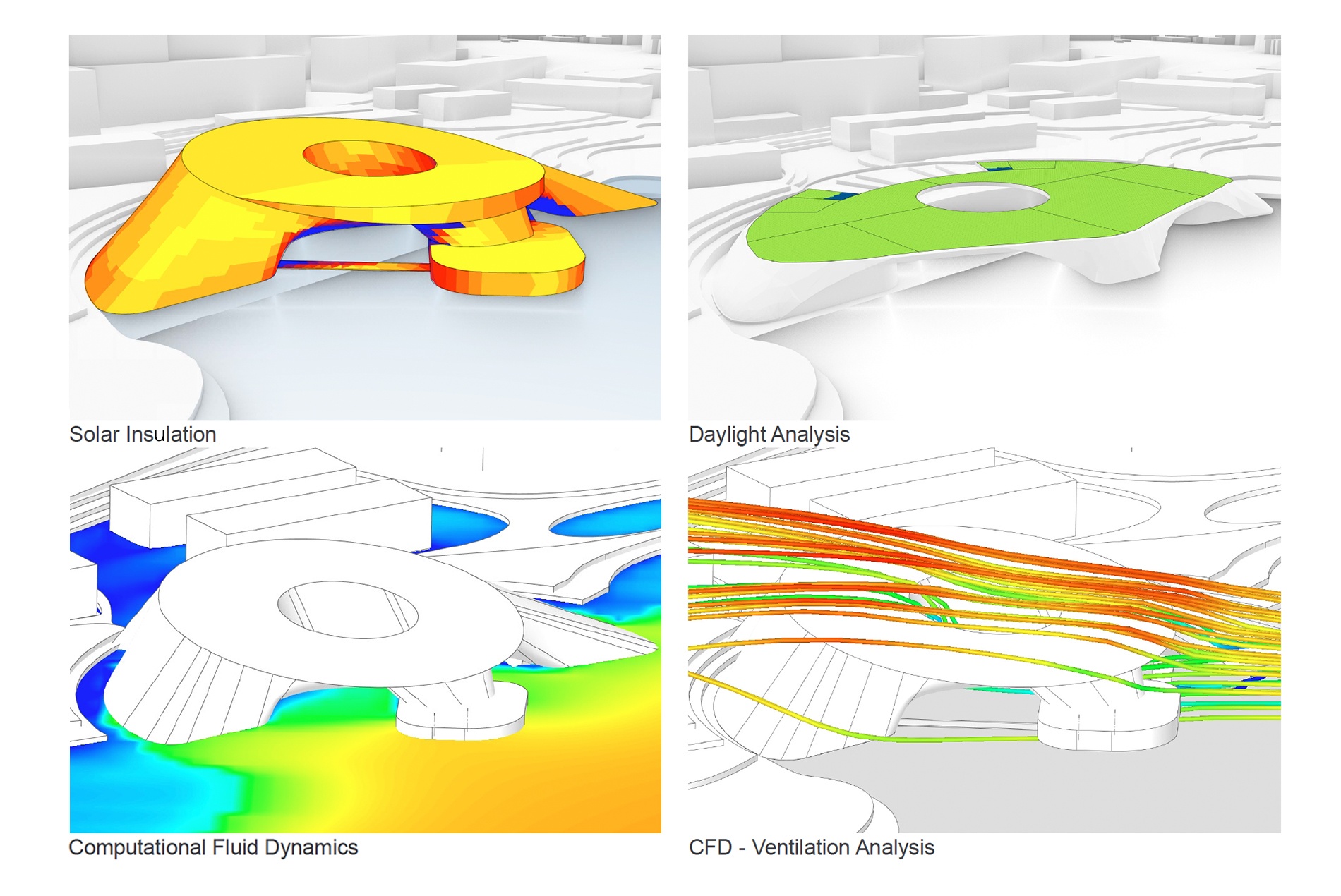
Low-Energy Building
The shape of the building and its facade allow for a completely daylit interior environment that is naturally ventilated for half the year.
Radiant systems are embedded within the concrete-based form with a thin-shelled vault. These systems take advantage of thermal mass and an efficient conductive heating and cooling process.
Internal Comfort
The facade performance is optimized through the structural and insulation performance.
Building on the radiant approach, the water source can be derived directly through hydro exchange with the East River.
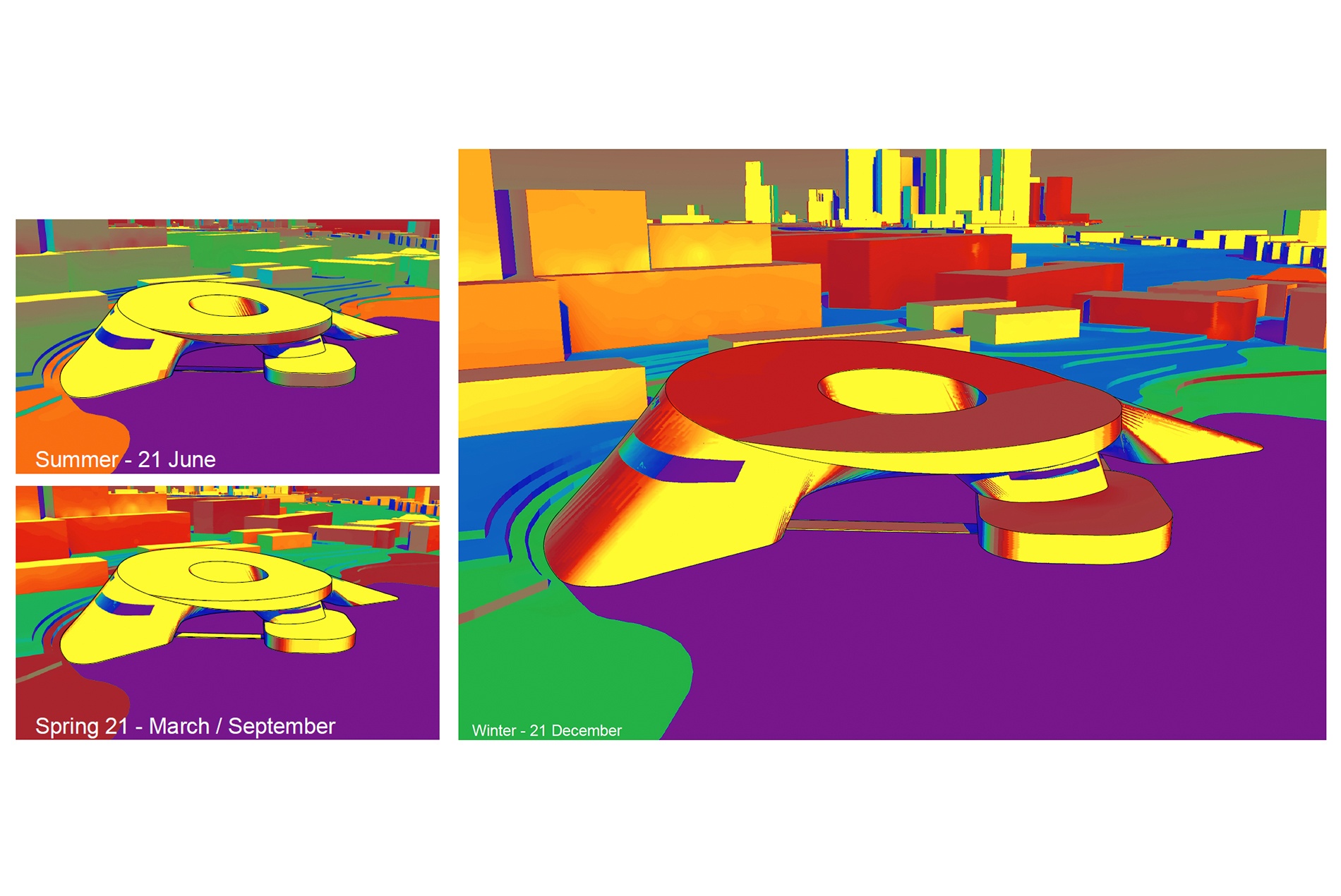
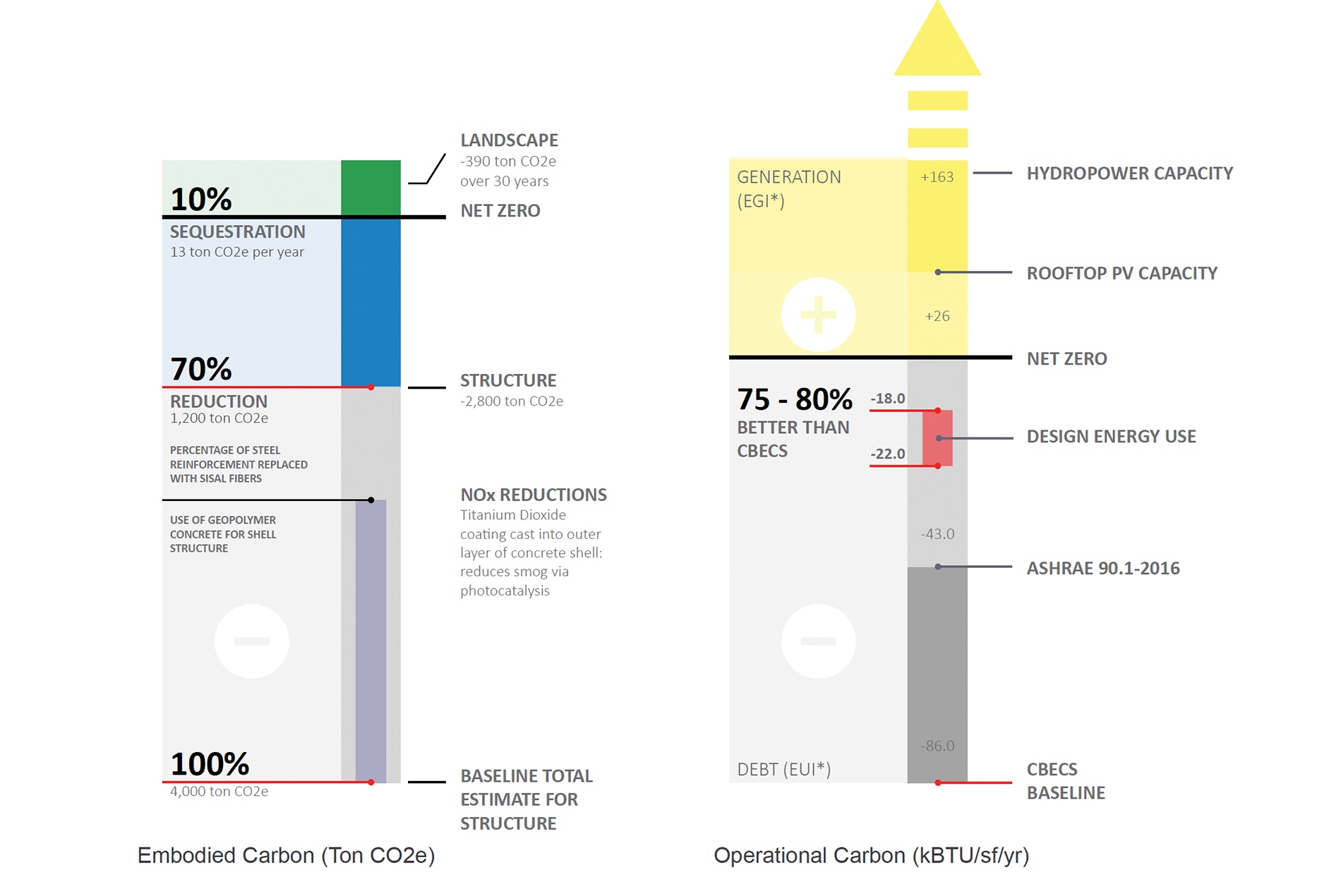
Carbon Optimization and Net Positive
While solving the complex challenge of climate change resilience, the team also wanted to ensure that this building would have low operational and embodied carbon. Another important goal was for it to function as a net-positive energy building.
The team’s analysis revealed that use of a thin geopolymer concrete with small aggregate and fiber reinforcement could cut embodied carbon by 70 percent. Planting additional landscape elements would sequester enough C02 to cut another 10 percent, for an 80 percent overall reduction in emissions.
The highly insulated complex geometric form, natural ventilation, radiant heating and cooling, massive rooftop solar array and hydropower system all combine to make this a net-positive energy building.
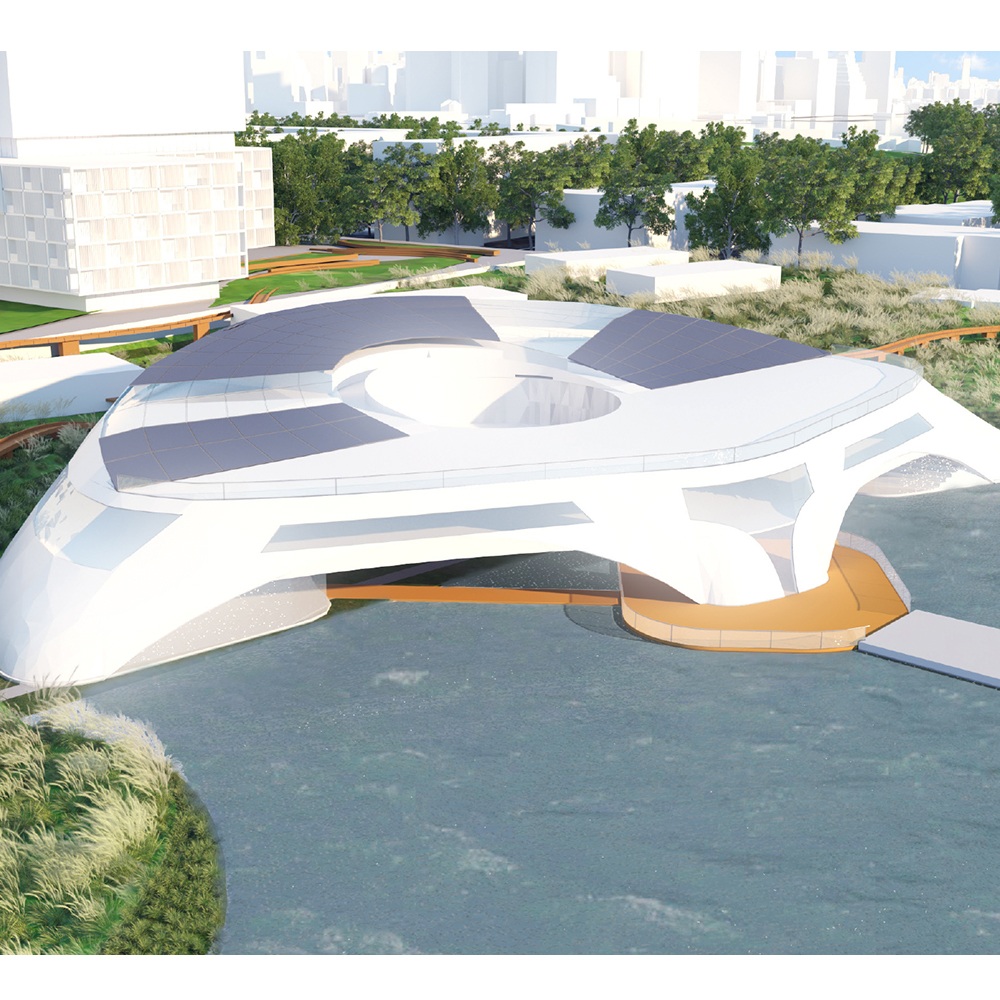
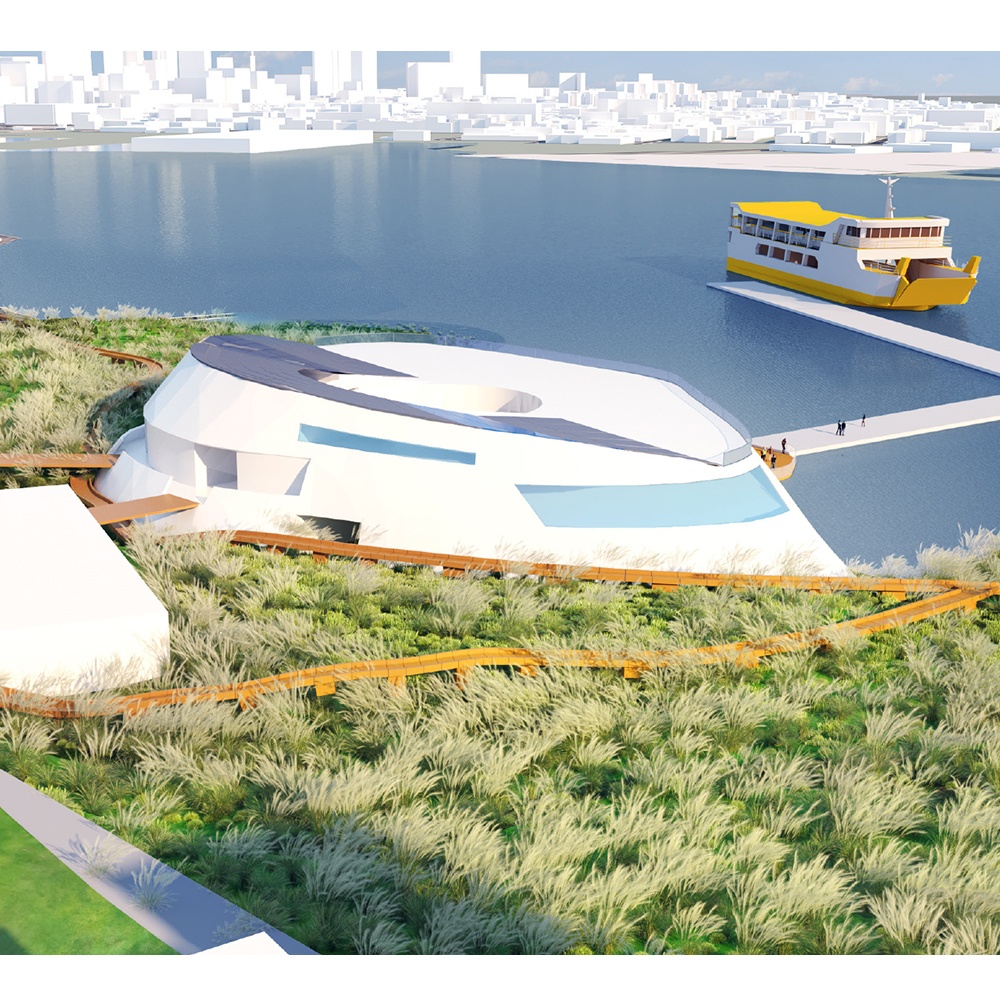
An Immersive Experience
Pathways will connect people across the site while immersing them in the landscape and changing tides.
As the sea level rises, the lower pathways disappear and are replaced by a narrowed spectrum of berms and bridges on higher land.
The ferry pier rises to the second floor and the research building shifts down to the ground level.
Designers and researchers will be able to study the impact of seal level rise on five unoccupied buildings that remain within the climate park.
Our Team
Thank you to Cesar Escalante and Autodesk University for hosting this Design Slam and allowing us to virtually present our research and design concept for a resilient, low-carbon and net-zero positive development on Governors Island. Watch the presentation on YouTube.
HOK’s integrated design team included Matt Breidenthal, Anders Carlson, Blanca Dasi Espuig, Devki Desai, Max Driscoll, Rafael Gavilanes, Patricia Piedrafita, Sean Quinn, Francis Sebastian, Rotimi Seriki, Daniel Van Briesen and Weijia Wu.
For any inquiries regarding the project design please contact Sean Quinn.